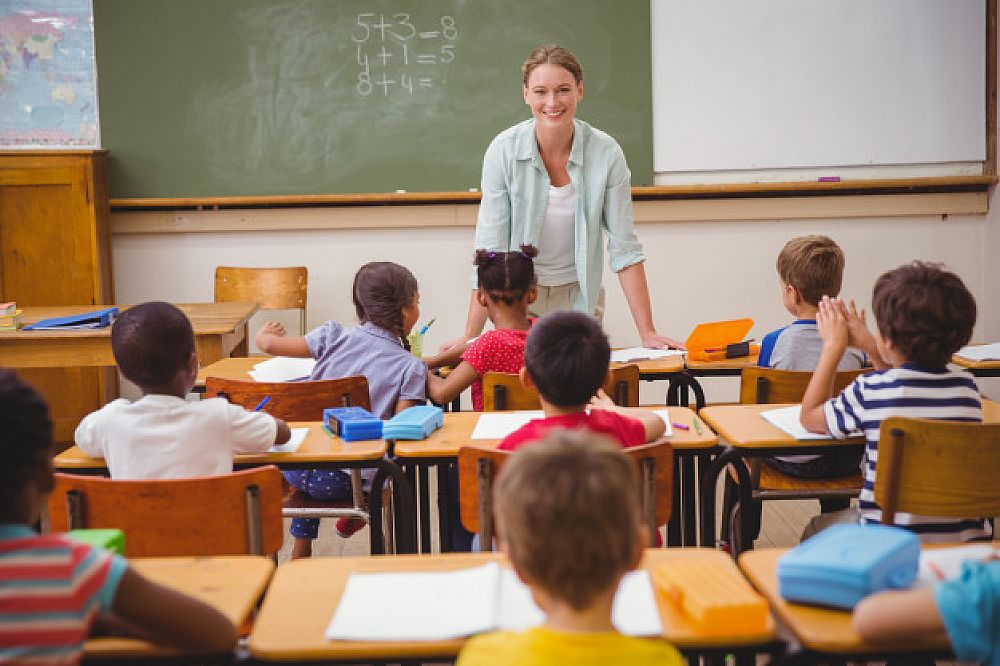Discover the Best Primary Science Tuition Singapore for Your Learning Journey
Discover the Best Primary Science Tuition Singapore for Your Learning Journey
Blog Article
A Comprehensive Overview to the Numerous Learning Methods in Key Science Instruction
The expedition of diverse learning methods in main science direction presents an opportunity for instructors to boost student interaction and understanding dramatically. By checking out hands-on understanding methods, inquiry-based methods, and collaborative techniques, we can recognize efficient techniques that deal with numerous discovering styles. Additionally, the integration of innovation and differentiated direction plays a critical function in promoting a comprehensive environment. However, the question remains: exactly how can these approaches be properly executed in the classroom to optimize their influence? The response hinges on a better assessment of each technique and its effects for teaching science.

Hands-On Discovering Strategies
Hands-on knowing methods play a critical role in main science guideline, engaging pupils in energetic exploration and trial and error. These methods enable learners to connect straight with phenomena and materials, fostering a deeper understanding of clinical ideas. By using manipulatives, models, and real-life experiments, educators create an atmosphere where students can observe, assume, and examine their ideas.
Such techniques not only improve comprehension yet likewise cultivate crucial thinking and problem-solving abilities. When students take part in tasks like developing easy equipments, growing seeds, or performing chemical reactions, they are encouraged to ask questions and look for answers with their very own monitorings. This experiential strategy aids to demystify complicated clinical principles, making them much more accessible and relatable.
Additionally, hands-on learning promotes partnership among peers, as trainees usually operate in teams to conduct experiments or share findings. This synergy not only enhances their knowing experience however additionally establishes necessary social abilities. Inevitably, incorporating hands-on techniques in primary scientific research instruction promotes a lifelong love of understanding and inquisitiveness concerning the environment, laying a strong structure for future academic quests in scientific research and past.
Inquiry-Based Learning
Inquiry-based discovering is an instructional approach that urges pupils to ask inquiries, check out phenomena, and build their very own understanding of scientific principles. This approach moves the focus from typical teacher-led instruction to a more student-centered experience, where learners take the effort in their academic journey. By fostering interest, inquiry-based learning promotes deeper involvement with the material, permitting trainees to discover subjects in a meaningful context.
In method, this technique typically includes hands-on experiments, observations, and important thinking activities that line up carefully with the scientific approach. Pupils are motivated to formulate hypotheses, design investigations, and evaluate data, which grows crucial skills such as logical and problem-solving thinking. The role of the educator in this framework is to assist in expedition, guiding pupils with the inquiry procedure while urging independent idea and cooperation.
In addition, inquiry-based understanding supports a feeling of ownership over the discovering procedure, encouraging pupils to pursue knowledge actively. This technique not just improves understanding of scientific principles but likewise fosters a long-lasting love for understanding, outfitting trainees with the skills necessary to navigate an increasingly complicated globe.
Collaborative Discovering Approaches
Joint knowing approaches equip trainees to participate in significant communications with peers, promoting a common duty for their instructional results. In main science guideline, these techniques motivate learners to collaborate to discover scientific principles, resolve issues, and conduct experiments (primary science tuition Singapore). By taking part in group tasks, pupils can leverage diverse perspectives, allowing for richer understanding and retention of scientific knowledge
One key facet of joint learning is the focus on communication abilities. Pupils have to articulate their ideas, pay attention proactively to others, and bargain concepts, every one of which are important proficiencies in both scholastic and real-world contexts. This social communication not only improves their understanding of scientific concepts however additionally advertises synergy and conflict resolution abilities.
When trainees see the worth of their contributions within a group, they are much more likely to take possession of their understanding journey. On the whole, integrating collaborative understanding methods in key scientific research guideline cultivates a vibrant knowing environment that prepares students for future academic and social challenges.
Technology Assimilation in Scientific Research
The combination of modern technology in main science guideline boosts learning experiences by providing ingenious tools and resources that sustain numerous training methods, consisting of collective learning - primary science tuition Singapore. Using electronic systems, simulations, and interactive applications permits trainees to involve deeply with clinical concepts, assisting in a much more hands-on method to knowing
Online research laboratories, for instance, allow students to carry out experiments safely and effectively, advertising inquiry-based understanding. These devices can imitate real-world scientific situations, enabling students to envision complicated procedures that would certainly be difficult to duplicate in a traditional class setting. Furthermore, technology promotes interaction and partnership amongst trainees, as they can share findings and collaborate on projects via on-line systems.
In addition, multimedia presentations and academic videos can improve lessons by catering to varied understanding styles, making abstract principles extra obtainable. Data analysis tools also encourage pupils to gather click and analyze clinical information, enhancing essential believing skills. On the whole, the strategic unification of innovation in main science direction not only improves interaction yet also prepares students for a technically sophisticated culture, furnishing them with necessary skills for future scientific endeavors.
Distinguished Guideline Approaches
Distinguished direction techniques are crucial for attending to the varied requirements of learners in main science education and learning. These approaches allow instructors to customize their teaching methods to fit varying capabilities, passions, and discovering designs within the class. By employing distinguished direction, teachers can create an inclusive atmosphere that fosters interaction and enhances understanding of clinical ideas.
One efficient technique is to use versatile grouping, which permits pupils to team up with peers at similar ability degrees or with differing perspectives. This approach motivates peer knowing and advertises critical thinking. Additionally, offering choices in tasks can empower students, enabling them to pick tasks that reverberate with their passions while still fulfilling curricular objectives.
Moreover, including tiered tasks is an additional useful technique. Deliberately tasks with differing levels of intricacy, educators can ensure that all trainees are properly tested, despite their efficiency. Using formative analyses to assess understanding further allows instructors to adjust their instructional methods dynamically, making certain that each learner gets the assistance they require.
Ultimately, carrying out differentiated instruction strategies in primary science education not only boosts pupil knowing results however likewise cultivates a passion for science, preparing pupils for future scholastic quests.

Final Thought
In summary, reliable main science guideline demands a diverse approach that includes hands-on understanding, inquiry-based techniques, and collaborative methods. The assimilation of innovation and distinguished instruction even more provides to diverse learning styles, fostering an environment favorable to exploration and essential reasoning.
The exploration of diverse knowing approaches in key scientific research direction provides a possibility for instructors to enhance pupil engagement and comprehension dramatically.Hands-on understanding my company techniques play a crucial role in key science guideline, involving students in active expedition and trial and error.Inquiry-based understanding is an instructional strategy that motivates pupils to ask concerns, investigate phenomena, and build their very own understanding of clinical concepts.Collaborative understanding approaches encourage students to involve in significant interactions with peers, cultivating a common duty for their academic end results. In general, including collaborative learning methods in key my site scientific research direction grows a dynamic knowing environment that prepares trainees for future academic and social difficulties.
Report this page